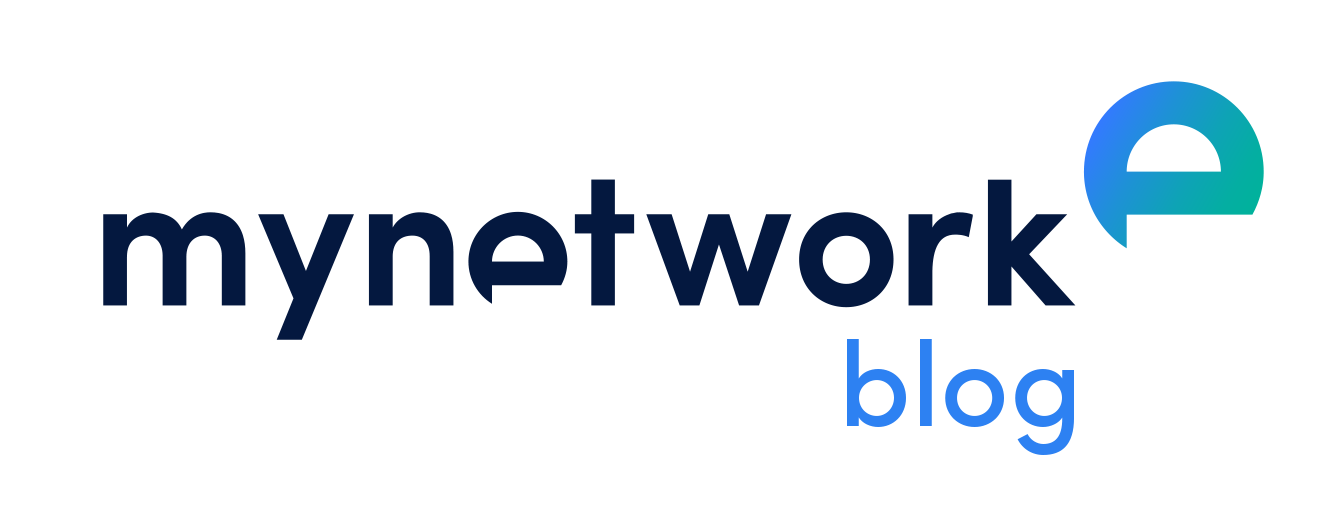Czy onboarding online to rozwiązanie wyłącznie na czas pracy zdalnej?
Program onboardingowy to absolutne „must have” dużych organizacji. Wrażenie zdobyte pierwszego dnia jest niezwykle ważne w całym procesie adaptacji pracownika w nowej firmie.

Każdy z nas pamięta swój pierwszy dzień; tę niepewność, zagubienie, stres przed niewiadomym. Nie jest to łatwe przeżycie, nawet dla osób otwartych, łatwo nawiązujących kontakty. Czas pandemii dodatkowo nie ułatwia startu nowym pracownikom, czy to zatrudnianym zdalnie czy stacjonarnie. Odpowiednio zaprojektowany i przemyślany program onboardingowy przyniesie organizacji oszczędności kosztów (kolejne rekrutacje, ciągłe wdrażanie pracowników, którzy szybko odchodzą) i czasu (dział HR ma opracowany program dla każdego nowo zatrudnionego; osoba odpowiedzialna za onboarding wie, co ma robić; wszyscy działają według ustalonego planu), a nowym pracownikom zapewni skuteczne wdrożenie i szybką integrację z zespołem.
Rola specjalistów od dedykowanych programów onboardingowych
O tym, kto powinien wziąć w danej firmie odpowiedzialność za wypracowanie efektywnego onboardingu, decyduje m.in. wielkość przedsiębiorstwa. Zazwyczaj za wdrożenie nowego pracownika odpowiada przedstawiciel działu HR lub bezpośredni przełożony, jeżeli mamy do czynienia z mniejszą firmą. W każdym przypadku proces ten stanowi ważny element strategii organizacji, gdyż źle przeprowadzony onboarding potrafi mocno odbić się na reputacji firmy i jej rentowności. Duża rotacja pracowników oraz niepochlebne opinie w sieci nie są oczekiwane przez żadnego pracodawcę. Rekruterzy, pracownicy działów HR, menedżerowie czy inni specjaliści, działający w imieniu firmy, którym zależy na wypracowaniu modelu wzorowego wdrażania nowych pracowników, nie muszą i nie powinni być pozostawieni sami sobie. Z pomocą przychodzą im zewnętrzni eksperci, zajmujący się projektowaniem dedykowanych programów onboardingowych. W skład takich programów wchodzi pakiet szkoleń i materiałów pomocniczych w wersji online (prezentacje, interaktywne PDF-y, video, animacje itd.). Poszczególne elementy micro i macrolearningowe można ze sobą dowolnie miksować w zależności od zapotrzebowania.

Poznaj program onboardingowy opracowany przez MyNetwork.
Etapy zdalnego onboardingu: pre-onboarding
Pre-onboarding to etap poprzedzający właściwy onboarding. Istotne jest budowanie relacji z pracownikiem jeszcze zanim rozpocznie pracę w firmie, czyli w momencie, gdy zostaną przez niego zaakceptowane warunki umowy o pracę. W tym czasie można wysyłać do pracownika powitalne maile (warto je wzbogacić o video lub animacje przedstawiające członków zespołu i ich funkcje) czy bardziej wyszukane formy newslettera, utwierdzające go w przekonaniu, że cały zespół czeka na jego przyjście.
Podczas okresu „przejściowego” między pracą w jednym i drugim przedsiębiorstwie warto zadbać o dobry nastrój nowo zrekrutowanego i wzmocnić w nim poczucie słusznie podjętej decyzji dotyczącej zmiany zatrudnienia. Pozytywne nastawienie oraz niwelacja lęku przed rozpoczęciem czegoś nowego to połowa sukcesu. Bynajmniej nie jest to (jeszcze) czas na dzielenie się plotkami z życia firmy i współpracowników, ale przesyłanie materiałów ogólnych, np. link do firmowego bloga czy innych wydarzeń branżowych, zaproszenie na wspólne wyjście na kręgle również jest mile widziane. Ważną częścią składową tego etapu są sprawy formalne: wymiana niezbędnych dokumentów wymaganych prawem pracy, takich jak zaświadczenie o odbyciu badań lekarskich oraz działania związane z organizacją sprzętu potrzebnego do wykonywania zadań na danym stanowisku.
Etapy zdalnego onboardingu: onboarding
Kluczowa dla drugiego etapu jest właściwie przygotowana agenda onboardingu w firmie, wyznaczająca zadania do zrealizowania nie tylko dla pracownika, ale i menedżera czy opiekuna nowo zatrudnionego. Szczegółowo zaplanowany przebieg pierwszego i kolejnych dni pomoże nowemu pracownikowi skupić się na realizacji celów wdrożeniowych, wpłynie na jego mobilizację i poczucie bezpieczeństwa. Podobnie opiekun, działając zgodnie z wcześniej wyznaczonym planem, ma mniejsze szanse na popełnienie typowych błędów, polegających na przeciążeniu podopiecznego nadmiarem informacji czy wywołaniu wrażenia chaosu. Zrównoważony, przemyślany plan działań onboardingowych z odpowiednim dawkowaniem wiadomości i różnorodnością w sposobie ich przekazywania jest korzystny dla każdej ze stron – pracownik, który w spokoju zdobywa wiedzę o firmie, zadaniach i współpracownikach, jest skłonny na dłużej związać się z organizacją, gdyż od pierwszych chwil czuje się zaopiekowany. Nie chodzi o promowanie postawy dziecka skrywającego się za spódnicą mamy, ale o zwykły szacunek dla nowej osoby w zespole.
Warto na bieżąco sprawdzać poziom komfortu psychicznego pracownika i stopień opanowania nowej wiedzy i umiejętności. W sytuacji wdrożenia w czasie pracy zdalnej jest to szczególnie ważne, ponieważ nowo zatrudniony z założenia ma nieco trudniej: nie poczuje tzw. atmosfery biura, nie spotka się na kawie ze współpracownikami czy nie uzyska natychmiastowej pomocy w postaci np. instruktażu technicznego. Nowoczesny zdalny onboarding musi sprostać również takim wyzwaniom. Klimat biura można oddać przy pomocy filmików, animacji i fotoreportaży z miejsca pracy, „na kawę” i pogaduszki z pozostałymi członkami zespołu umówimy się dzięki dostępnym już na rynku aplikacjom, a instruktaż obejrzymy w intranecie lub „na żywo” poprzez komunikator. Nie można zapomnieć o tym, że czas wdrożenia jest tym momentem, w którym pracownik ma prawo uzyskać odpowiedzi na wszystkie nurtujące go pytania.
Etapy zdalnego onboardingu: post-onboarding
Ostatnim etapem jest ewaluacja całego systemu wdrożeniowego w firmie. Tak jak w innych obszarach funkcjonowania organizacji, tak i w tym opłaci się zadać sobie trud przeprowadzenia ankiet, badających zadowolenie nowych pracowników z zapoznania ich z zakresem obowiązków, zespołem i wartościami firmy. Uzyskana informacja zwrotna powinna przysłużyć się do wprowadzania modyfikacji i ulepszeń zaproponowanego programu wdrożeniowego.
Zaprojektuj onboarding dopasowany do potrzeb firmy.

Zdalne programy onboardingowe przyszłością firm
Czy decydując się na zdalny onboarding w firmie lub jego elementy, jest się czego obawiać? Jak pokazują doświadczenia największych organizacji, zatrudniających po kilkaset i więcej osób, wypracowanie takiej formy skutecznego wdrożenia pracowników jest nie tylko możliwe, ale w obecnej rzeczywistości i trudnej do przewidzenia przyszłości absolutnie niezbędne. Zaskoczeni wybuchem pandemii potrafiliśmy wiele dziedzin życia przestawić na tryb online; nie tylko robienie zakupów, ale również wizyty lekarskie czy sprawy urzędowe. Zagadnienie onboardingu na tym tle nie rysuje się w czarnych barwach. Wprost przeciwnie, daje nadzieję na przyszłość, pokazuje, że firmy mogą się rozwijać, zatrudniać nowych pracowników, rekrutując ich na stanowiska stacjonarne czy też zdalne, wykorzystując w tym celu dobrze przygotowane, częściowo zautomatyzowane i w perspektywie bardziej opłacalne programy wdrożeniowe online.

Podsumowanie
Przemyślany, skuteczny program onboardingowy zaprojektowany we współpracy ze specjalistami HR i ekspertami z zakresu produktów e-learningowych to rozwiązanie na miarę dzisiejszych czasów. Jak wskazują badania O.C. Tanner, właściwie przeprowadzony onboarding jest w stanie zatrzymać około 91% pracowników w firmie na minimum trzy lata. Buduj zatem nowoczesną organizację i wprowadź do niej onboarding dopasowany do Twoich potrzeb.



